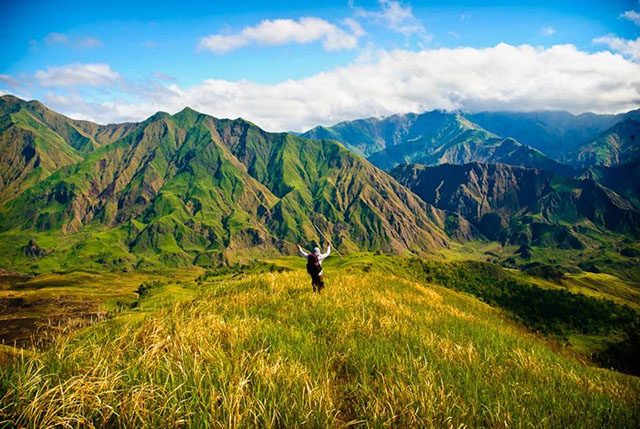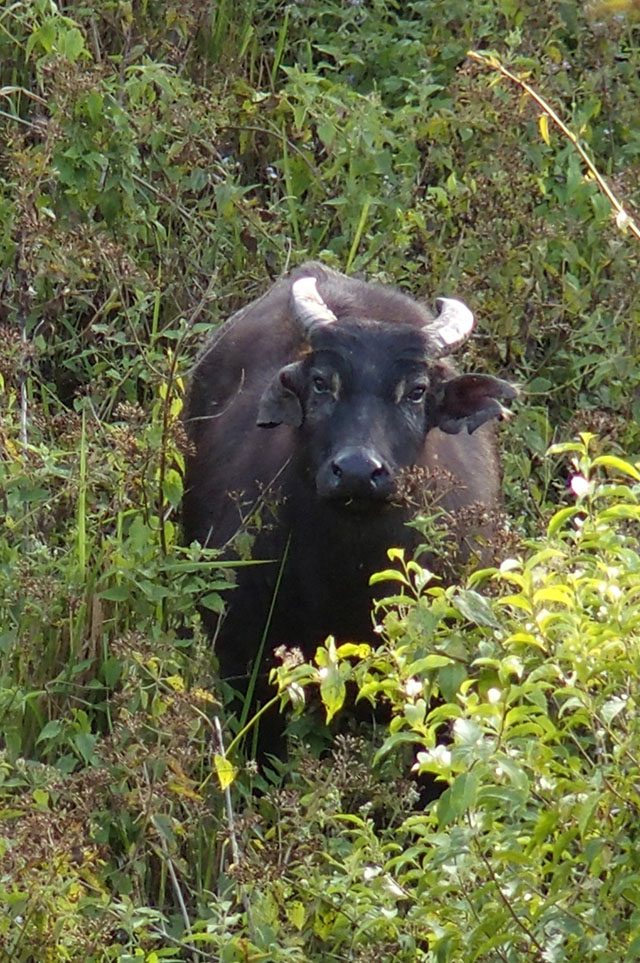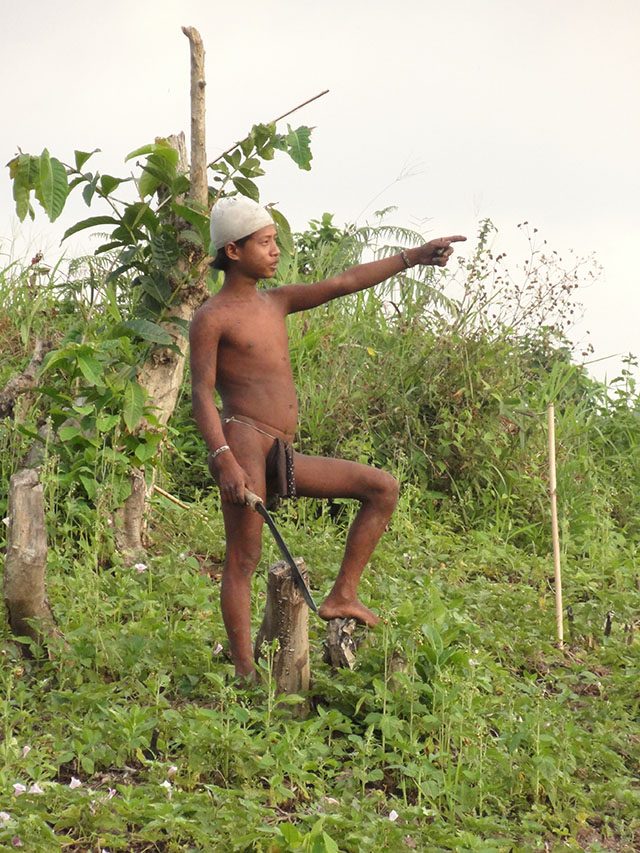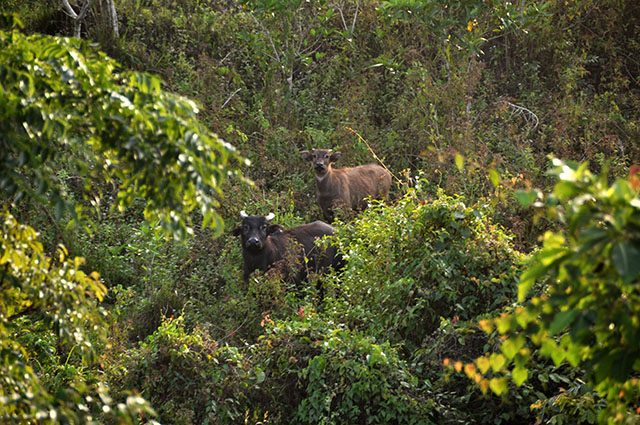SUMMARY
This is AI generated summarization, which may have errors. For context, always refer to the full article.

MANILA, Philippines (UPDATED) – When we protect a place like the Mts Iglit-Baco National Park, it reflects well on us Filipinos. It shows that we care about the richness of our natural and cultural biodiversity.
We start to care about something only after we become aware of how valuable it is.
So let me tell you what makes this national park something we can be proud of as Filipinos.
Mts Iglit-Baco National Park is a rare mountain grassland ecosystem.
When you think “grassland,” you usually imagine flatlands like those in Africa. And when you think “mountains,” you probably think of forests and trees. The park is unique. It is mountain grassland that’s found in Mindoro.
It covers an area of 75,445 hectares, 70% of which is covered by grass. Its geologic characteristics include rugged terrain, river gorges, and plateaus. Mt Iglit (2,364 meters above sea level) and Mt Baco (2,488 meters above sea level) are the two highest peaks.
There is a proposal to expand the area westward of the park, where traces of tamaraw were found. Doing so will allow the core zone to expand for better protection of these “dwarf buffalo” species.

The park is the home of 35 endemic species, and it is a major watershed.
“The park shelters 8 different watersheds for big rivers in both provinces,” says Emmanuel Schütz, coordinator for “Tamaraw Program – Philippines” at Noé Conservation. It helps keep the ecological balance in Occidental and Oriental Mindoro.
There are plants and animals that are found in the park and nowhere else in the world. The most famous of these species is the tamaraw, a national icon.
As of April 2015, 405 heads of tamaraw were counted. That number has gone up from 274 heads in 2011. Still, time is running out for the shy and fierce dwarf buffalo: It remains a critically endangered species. In the 1900s, there were about 10,000 heads of tamaraw in the national park.
The park shelters 8 different watersheds for big rivers in both provinces. It helps keep the ecological balance in Occidental and Oriental Mindoro.
It is home to 4 groups of Mangyan indigenous people.
Tau-Buid, Buhid, Bangon, and Batangan Mangyan live within the park, reports Schütz. And there is a link between indigenous culture and biodiversity.

When I requested an interview with Fausto Novelozo, leader of the Tau-Buid tribe, he readily granted it. He said, “Ang buhay naming mga Tau-Buid ay may matatag na ugnayan sa samu’t-saring buhay ng Iglit (The lives of Tau-Buid residents have a strong connection to the various creatures of Iglit).”
Geographer Bernard Nietschmann would agree. He said, “Where there are indigenous peoples with a homeland there are still biologically rich environments.” In fact, out of the 128 biologically diverse areas in the Philippines, 96 are within the ancestral lands of indigenous peoples.
That’s a promising idea: that there are many things we can still discover and conserve in the park. No one has yet fully explored its rugged terrain. No one has reached the summit of Mt Baco.
It was added to UNESCO World Heritage Tentative List in 2006.
The national park is listed under two categories:
(ix) To be outstanding examples representing significant on-going ecological and biological processes in the evolution and development of terrestrial, fresh water, coastal and marine ecosystems and communities of plants and animals; and
(x) To contain the most important and significant natural habitats for in-situ conservation of biological diversity, including those containing threatened species of outstanding universal value from the point of view of science or conservation
You may wonder, why has the park not been nominated for World Heritage inscription? The process of inscription of a site into the list may take years. It involves preparing a dossier: All the participants who are interested in conserving the site – including the barangay captains, tribe leaders, researchers, and community members – carefully compile the documents that will go into the dossier.
Half of the dossier includes research about the site and why it’s valuable; the other half is a management plan.
Once the national park is declared a World Heritage site, it will attract tourists in droves. However, it is a fragile site. The influx of tourists will disturb the shy tamaraw and ruin the national park. That would be a disaster.

Proper development of the park would pave the way for development. A general management plan can serve as catalyst to infrastructure improvement, urban connectivity, and local and regional development. It should also open opportunities for continuous academic research in anthropology, ecology, and habitat management.
Many plans have to be put in place, and these will require the engagement of the Tau-Buid and Buhid Mangyan. After all, they know the park best.
The management board could design activities like tamaraw watching tours. Regulated hiking and home stay programs could be developed. Managed well, these activities can employ the people living in and near the national park. They can work as porters or guides and earn from fees. Tourism revenues can also be used to maintain the national park.
How do we become stewards of an entire mountain ecosystem and our conservation areas? I have 3 suggestions for you, dear reader:
Let’s start visiting our own conservation areas first. Why travel abroad, when there are many mountains and culturally diverse places in the Philippines?
Let’s respect the local community. For example, the Mangyan are a generally shy people. Tamaraw rangers have reported that when they inadvertently enter a Mangyan community, the people shout, perhaps out of fear of outsiders. Let’s be mindful guests and behave accordingly. I have already heard reports of locals from other tourist destinations who lose their natural hospitability and friendliness, out of irritation.
Let’s have open minds and hearts. We need to learn about the lives and struggles of our indigenous brothers and sisters. We don’t know so much about them, and we need to bridge the gap between them and us. – Rappler.com
Bojer B. Capati (boj_capati@yahoo.com) has a master’s degree in Geography (Urban and Regional Planning), with specialization in National Park Planning and World Heritage Studies from Peking University. This article is based on his graduate thesis, which he also presented at the University of Massachusetts Amherst in May 2015 and in two other conferences in Germany and Russia. He is a member of ICOMOS Philippines. He is grateful to the National Commission for Culture and the Arts, Emmanuel Schütz of Noé Conservation, and Rodel Boyles, park superintendent of Mts. Iglit-Baco National Park, for their support.
Dinna Louise C. Dayao (dinnadayao@gmail.com) is an experienced writer and editor.
Add a comment
How does this make you feel?
There are no comments yet. Add your comment to start the conversation.